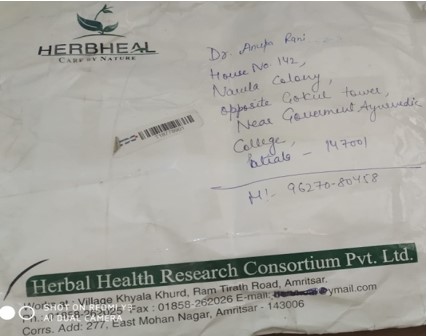Comparative antimicrobial study of bark extract (Aqueous, Chloroform, Ethanol) of Pum Kutaja (Holarrhena antidysenterica [Linn] Wall ex.G.Don) & Stri Kutaja (Wrightia tinctoria R.Br)
DOI:
https://doi.org/10.21760/jaims.8.9.8Keywords:
Stri Kutaja, Pum Kutaja, Holarrhena antidysenterica, Wrightia tinctoria, Antimicrobial Study, Bark ExtractsAbstract
Antimicrobial resistance has become a global health crisis, leading to increase morbidity, mortality and health care costs. Antibiotic resistance is a growing global health concern. Overuse and misuse of antibiotics have led to the emergence of bacteria that are resistant to many commonly used drugs. Natural plant-based medicines offer an alternative approach to combat infections, as they contain various bioactive compounds that can effectively inhibit the growth of bacteria, fungi, viruses, and other microorganisms. This study describes a procedure for retrieving the ethanol, chloroform, and aqueous extracts from the bark samples of Sample A - Pum Kutaja (Holarrhena antidysenterica [Linn] Wall ex.G.Don) and Sample B - Stri Kutaja (Wrightia tinctoria R.Br) testing them against a variety of microorganisms, both Gram-negative bacteria Vibrio cholerae (MTCC 3906), Pseudomonas aeruginosa (ATCC 27853), Escherichia coli (ATCC2592), and Gram-positive bacteria Streptococcus pneumoniae (MTCC 655), Staphylococcus aureus (ATCC 29213) and fungus Candida albicans (MTCC 227) for antimicrobial effect.
Downloads
References
Narhart, Raj Nighantu. (e Nighantu). Developed by National Institute of Indian Medical Heritage, Hyderabad for Central Council for Research in Ayurvedic Science New Delhi: 2012 (Available from:http://www.nimh.nic.in/ebooks/eNighantu).
Acharya Susruta, Susruta Samhita, commentary by Shastri Dutt Ambika, Vol1, Uttartantra 40/3-5; Published by Chaukhamba Sanskrit Sansthan Varanasi;2015,272p.
Nadkarni AK, Indian Materia Medica, Bombay: Popular Prakashan Pvt. Lad 1995. Volume-I p. 634-651.
Nadkarni AK, Indian Materia Medica, Bombay: Popular Prakashan Pvt. Lad 1995. Volume-II p.
Kirtikar KR, Basu BD. Indian Medicinal Plants. 2 ed. Delhi: Periodical Book Agency, 1993. Vol-2 p.1569-1573
Kirtikar KR, Basu BD, Indian Medicinal Plants. 2 ed. Delhi: Periodical Book Agency, 1993. Vol-2 p.1581-1583
Anonymous, The Wealth of India, New Delhi: Council of Scientific &Industrial Research, 2003; Vol V: A p. 103-107
Anonymous. The Wealth of India, New Delhi: Council of Scientific &Industrial Research. 2003; Vol X: A p. 588-590.
Textbook of Microbiology(4th) edition 2012, Published by Arya Publication, Delhi,Ch No 34, Pg.No.281-287.
Textbook of Microbiology(4th) edition 2012, Published by Arya Publication, Delhi, Ch No.31, Pg.No.247-253.
Textbook of Microbiology(4th) edition 2012, Published by Arya Publication, Delhi, Ch No 23, Pg.No.178-184.
Textbook of Microbiology(4th) edition 2012, Published by Arya Publication, Delhi, Ch.No.36, Pg.No.297-300.
Textbook of Microbiology(4th) edition 2012, Published by Arya Publication, Delhi, Ch 25, Pg.No.200-203.
Textbook of Microbiology(4th) edition 2012, Published by Arya Publication, Delhi, Ch.No.66, Pg.No.563-565.















